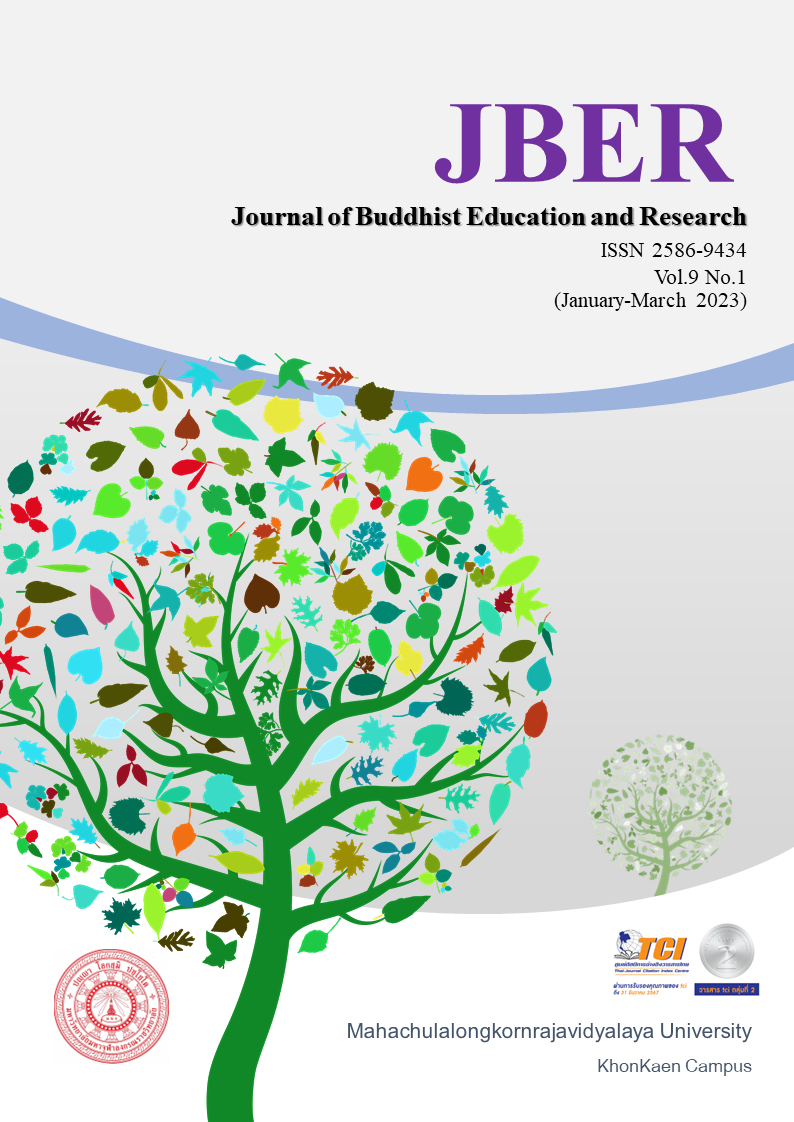POSITION AND PARTICIPATION OF THAILAND'S MANUFACTURING AND SERVICE SECTORS IN GLOBAL VALUE CHAINS
Keywords:
Position and Participation, Manufacturing and Service Sector, Global Value ChainsAbstract
This Article aimed to study to examine Thailand’s position and participation across industries, both manufacturing and services, on the global value chains (GVCs). It used a quantitative research method and an empirical tool for economic analysis was the OECD Inter-Country Input-Output (ICIO) Table for the year 2021. It measured participation in GVCs, the length of GVCs, and the distance to final demand in Thailand and other 17 selected countries in total 17 industries.
The results indicated that:
Thailand had the GVC participation index of 0.39 which was below the world average and was ranked on the 14th position in the 18 selected countries. A measure of the length of GVCs indicated that many industrial sectors in Thailand used various intermediate inputs, both goods and services, and purchased from various sourcing countries along the value chains. Also, Thailand had a high degree of backward linkage to many upstream sectors, both domestic and international. A measure of the distance to final demand indicated that Thailand’ locations in the GVCs was biased towards the downstream stage, particularly the industries with advanced technology use. Therefore, Thailand should increase its labor productivity and technological innovation capabilities by focusing on the production activities which generate high value added to the country.
References
ธนาคารแห่งประเทศไทย. (2561). เครื่องชี้วัดห่วงโซ่มูลค่าเพิ่มการผลิตในการค้าระหว่างประเทศ (Global Value Chain) และประโยชน์ต่อการประเมินภาวะเศรษฐกิจ, สืบค้นเมื่อ 5 ตุลาคม 2564. จาก https://www.bot.or.th/Thai/MonetaryPolicy/ArticleAndResearch/FAQ/FAQ_131.pdf.
สำนักงานสภาพัฒนาการเศรษฐกิจและสังคมแห่งชาติ. (2560). เจาะลึกโครงสร้างเศรษฐกิจไทยด้วยตาราง I-O (Input-Output Table), เอกสารประกอบการสัมมนาวิชาการสายงานเศรษฐกิจ ปี 2560 โดยสำนักงานคณะกรรมการพัฒนาการเศรษฐกิจและสังคมแห่งชาติ. 25 กันยายน 2560.
Dietzenbacher, E. and Romero, I. (2007). Production Chains in an Interregional Framework: Identification by Means of Average Propagations Lengths. International Regional Science Review, 30, 362-383.
Escaith, H. and S. Inomata. (2013). Geometry of global value chains in East Asia: the role of industrial networks and trade policies. In global value chains in a changing world, edited by D.K. Elms and P. Low. Geneva: WTO.
Koopmans, L. et al. (2011). Conceptual Frameworks of Individual Work Performance A Systematic Review. Journal of Organizational and Educational Leadership, 53(8), 856-866.
OECD. (2021). OECD Inter-Country Input-Output (ICIO) Tables. Retrieved 2 November 2022. from https://www.oecd.org/sti/ind/inter-country-input-output-tables.htm.
P. Antràs, D. Chor, T. Fally and R. Hillberry. (2012). Measuring the Upstreamness of Production and Trade Flows. American Economic Review: Papers & Proceedings, 102(3), 412–416.
Thomas Wiedmann, Harry C. Wilting, Manfred Lenzen, Stephan Lutter and Viveka Palm. (2011). Quo Vadis MRIO? Methodological, data and institutional requirements for multi-region input-output analysis. Ecological Economics, 2011, 70(11), 1937-1945.
WTO, World Bank Group, and OECD. (2017). Measuring and analyzing the impact of GVCs on economic development. Global Value Chain Development Report 2017. Washington DC.





